Though chicken care is relatively low-maintenance, there is an investment in your backyard flock that would be devastating to lose. So how do you protect your chickens and keep them warm in the winter months? There are four primary chicken coop bedding options discussed below and the considerations for each, including if you are interested in using the deep litter method and composting the chicken manure for your garden.
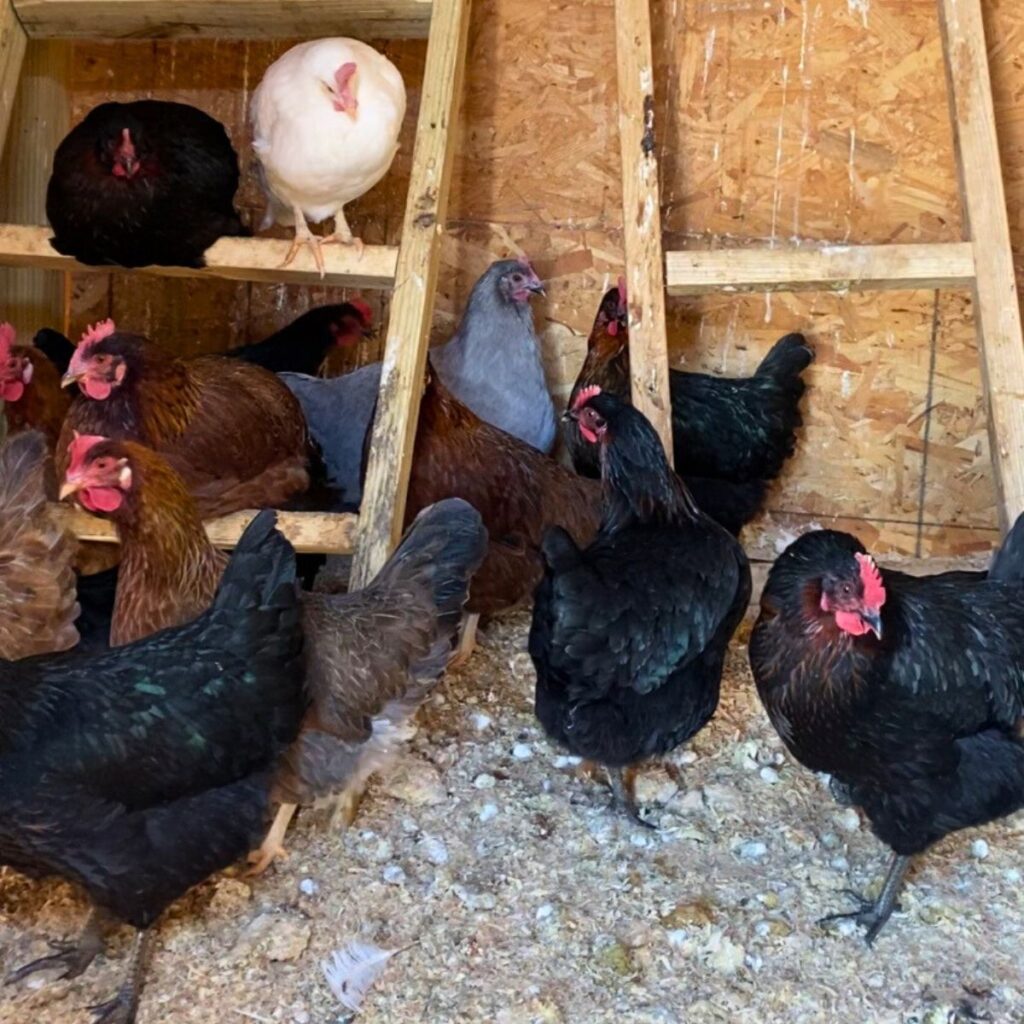
Our first priorities when starting a homestead were a garden and backyard chickens. We also had goats on the list, but they didn’t last long. I have enough kids running around with my own three right now (and another on the way!)! When some friends offered to give us their chickens in September 2022, we excitedly agreed and went to work building a chicken coop. We finished the coop in three weeks and brought the chickens home to a coop filled with wood shavings as bedding. A couple of months later, though, when the harsh winter reared its ugly head and our chickens were getting frostbite, we felt overwhelmed and way over our heads.
Backyard chickens have been such a blessing to our homestead, but the first winter months with them was rather stressful. We were definitely underprepared and rushed to purchase items that would help our chickens survive when the first major snowstorm hit. After securing a heated waterer and heating panel and insulating the cracks of between the pallets and fencing we used to build the coop, we next had to find a way to insulate the chicken coop with bedding. By this time it was also getting pretty stinky in there so it was time for a refresh. Too bad it was also in the negatives. What were our options?
Four primary types of bedding for chicken keepers
There are primarily four bedding materials for year-round chicken coop maintenance. No matter which you choose, chickens do need fresh bedding, though the frequency depends on the type. Aside from cost and maintenance, there aren’t really considerations outside of personal preference for year-round care unless you live in a zone with extreme seasons.
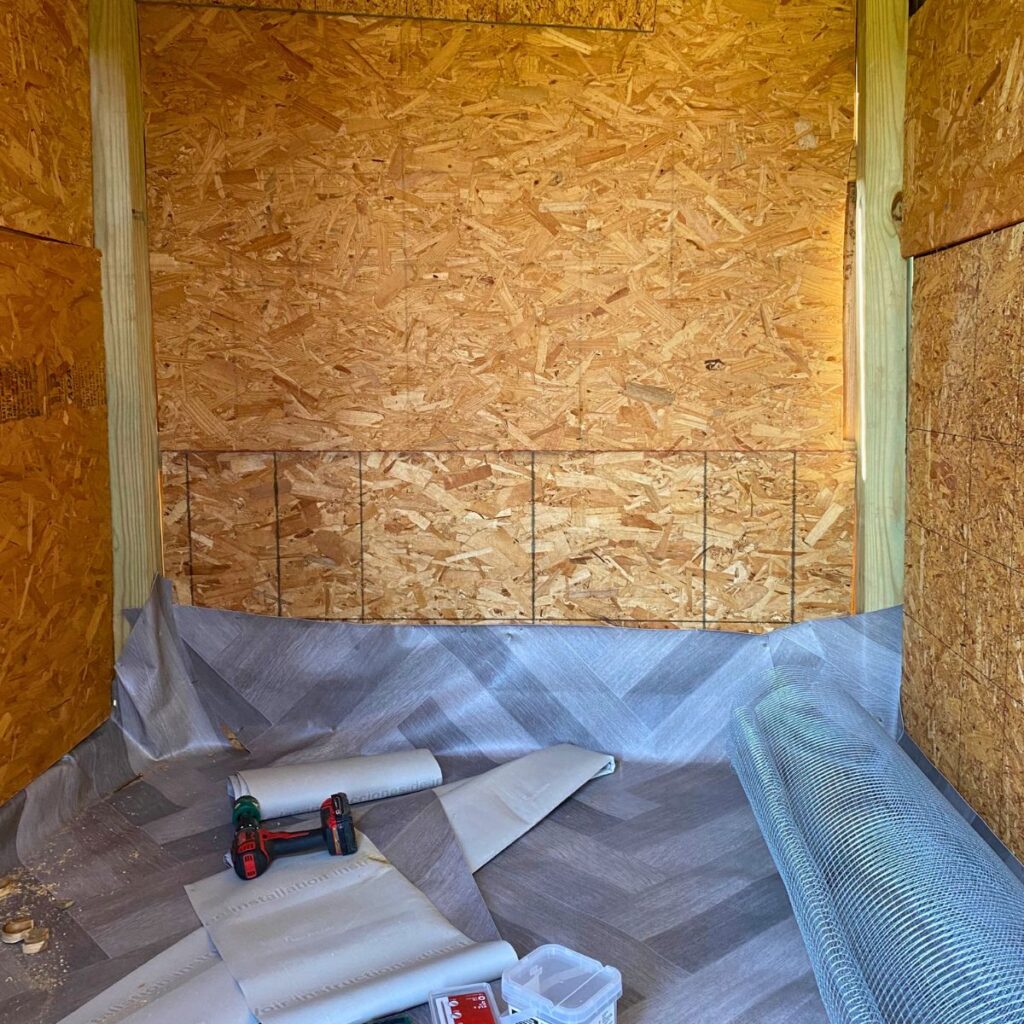
As you can see, our chicken coop is raised off of the ground and the coop floor is covered in vinyl flooring for easy clean up. When researching what our best options were for chicken coop bedding, there were four types that stood out to us.
The four options discussed in this post for chicken coop bedding (particularly in the winter) are as follows:
- Wood shavings
- Straw
- Sand
- Coffee grounds
Wood shavings as chicken coop bedding
This is probably the most popular choice for coop bedding and it is the one that we use in our coop year-round. Pine wood shavings are the most common and can be found at any local farm store. One concern about wood shavings or wood chips is about respiratory problems for chickens due to the dust. You can find plenty of information on anything homestead-related that has pros and cons and some people are very opinionated about them. The fact of the matter is there is not one “right” way to do things on a homestead that leads to perfection. Everything in this life has positives and negatives.
Our call to action is to do our due diligence, not be afraid of hard work, and pick the right option for our specific situation. For us, that is wood shavings. Primarily because my husband can get them fairly cheaply or even for free at times and we can use the deep litter method (meaning less cleaning overhauls in the winter though we do provide fresh bedding when needed).

Considerations
Some say the dust is not healthy for humans or chickens and to that I say, yeah probably not. But honestly, it’s what works best for what we need and desire to get the most enjoyment out of our chickens, so that’s what we go with. It is a good bedding that we can spread around our roosting bars and nesting areas (we do not have specific nesting boxes) with ease. It is fairly easy to keep this a dry bedding, rotating or adding to when necessary. Two times a year we give a full clean-out of the coop, a process I hope to detail in the future.
If you are concerned about respiratory issues for your feathered friends, no fear! There are other options for chicken bedding material in the winter chicken coop. You can find the right bedding for your flock, even if that means you have to get a little creative!
Straw as chicken coop bedding
Straw bedding is low-dust and insulates well, so it is a reasonable option for coop litter particularly in the colder months. It does, however, hold onto moisture and therefore needs to be replaced frequently. You could use the used bedding in a compost pile or in the run, but it is not conducive to the use of deep bedding for chicken coops. It also is difficult to keep clean and therefore you may have a lot more dirty eggs with this litter option.
Our first winter, we bought some bales to put along the sides of the coop for more insulation. I also use one as a step into the coop as it is about four feet off of the ground. However, straw breaks down rather quickly and there are concerns for mold due to moisture buildup. Because we were not able to monitor the coop as closely as we would like in the winter, we did not put straw in the coop this season. If there were to be a mold issue, then it would likely be a while before we caught wind of it and could resolve it. We do find that it is easy to scoop out the straw though because the chicken droppings create these little “chicken mud pies” that are easy to spot and pick up.
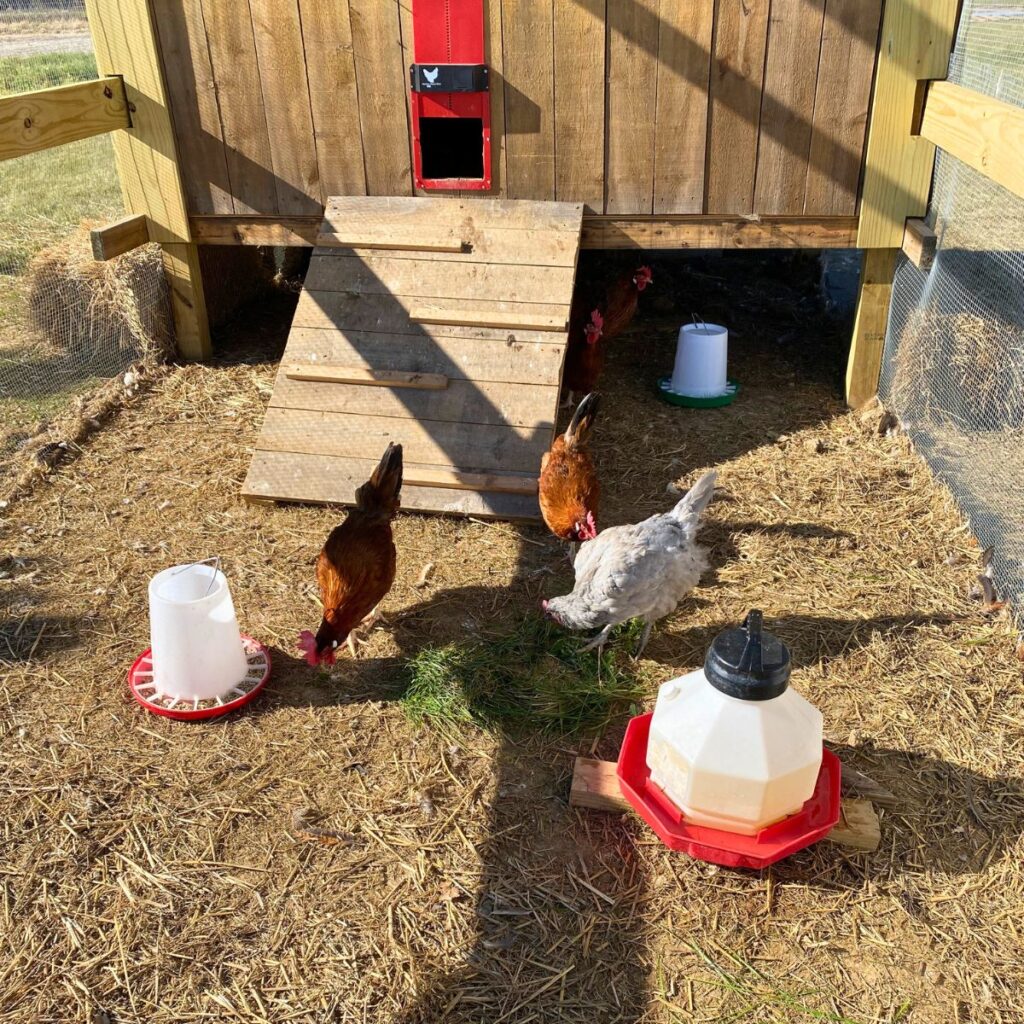
How we use straw for our chickens
We do still use straw bales in our chicken run. It did not take long for our chickens to turn our nice, grassy run into dirt (aka mud pit whenever the ground is soft). We do like to add the wood shavings that are not completely soiled after refreshing the coop and we also use straw. It breaks down fairly quickly but the chickens enjoy scratching through it and it helps the run to stay more level. The bales also work as a type of scratch activity for our chickens. I swear they have competitions to see how quickly they can disassemble the bales. It’s rather entertaining to watch.
Though I did not create an additional section for pine needles or dry leaves, they are another option that are similar to straw in my opinion. They break down fairly easy and require more clean-out maintenance. With this method, new litter is required about once a week. It can be a lot of work to clean out a large coop and even a small coop, especially in cold temperatures. But if you have a lot of trees on your property and you are interested in saving money, any greens like pine needles or grass clippings can be used as bedding.
The main reason I personally have not used this as a litter because I am committed to the deep bedding method, but if you are not, it could be a good choice for you!
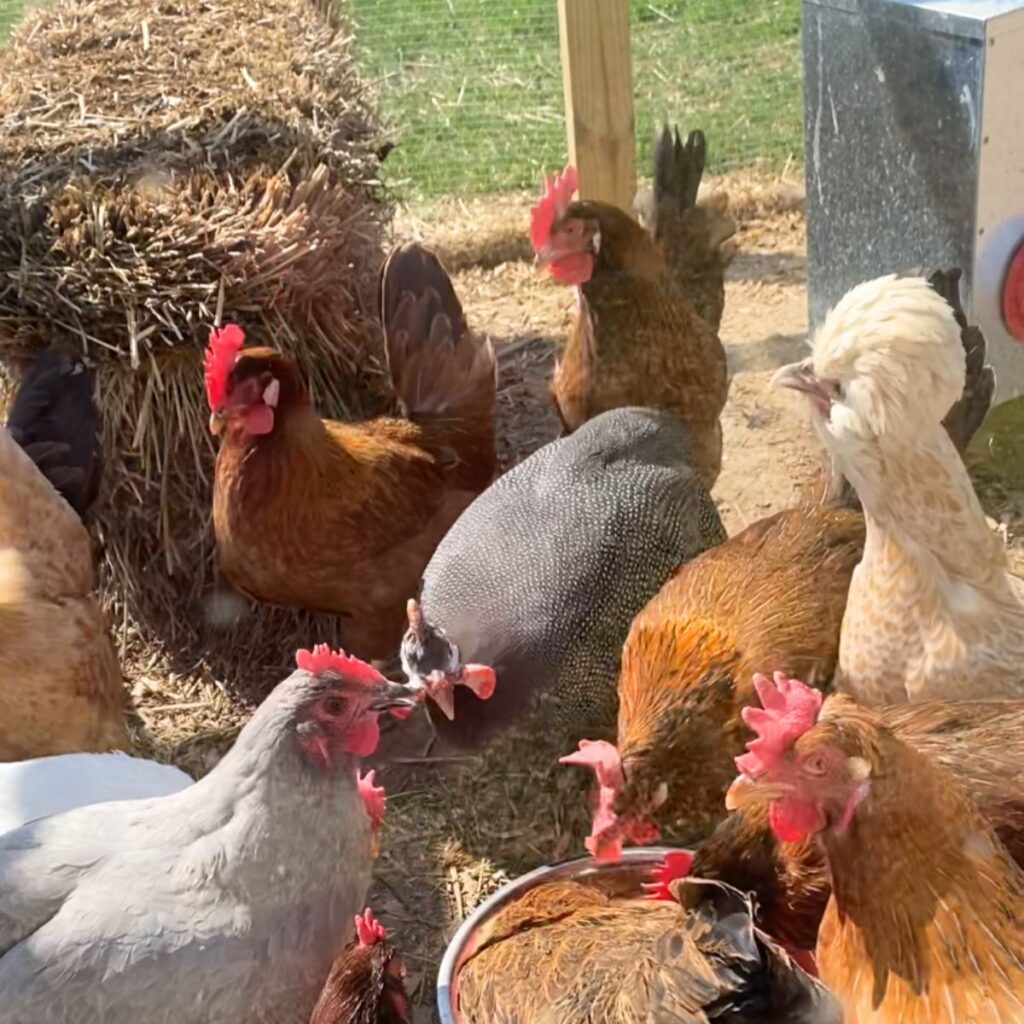
Sand as chicken coop bedding
The idea of using sand for bedding is that it works similarly to cat litter. It is suggested to allow for easy clean up of the poo that is on top. You cannot use sand and also do the deep litter method, as the chicken poop does not soak into the sand the way it does like wood shavings or straw. It also does not break down the same way.
We did not opt for this type of bedding for two reasons. For one, it would be really heavy for me to clean out should it need a complete refresh. As of now, I shovel all of the used chicken coop bedding into five gallon buckets and carry to the composting pile. It would be darn near impossible for me to carry that much sand (and also – where do you get that much sand anyway?). We were also concerned it would be too heavy for the coop floor in general, as the floor of the coop sits four feet off of the ground and sand is much heavier than wood shavings or straw.
The second reason is we have very harsh winters with regularly 60mph+ winds and we didn’t think using sand as bedding would insulate the coop near enough to keep our chickens from freezing during severe temperature drops. We use five X pound bags of wood shavings each time we refresh the coop in the winter, which means the bedding sits about three feet from the floor and is piled up on all sides. To accomplish the same thing with sand would take a lot of sand and it would be extremely heavy.
Using sand as chicken coop bedding is not a terrible idea and could work well for your chicken coop. The Frugal Farm Girl has a fantastic article titled “Why Sand is The Best Choice for Your Chicken Coop” if you are interested in learning more about this type of bedding. Read more about it here.
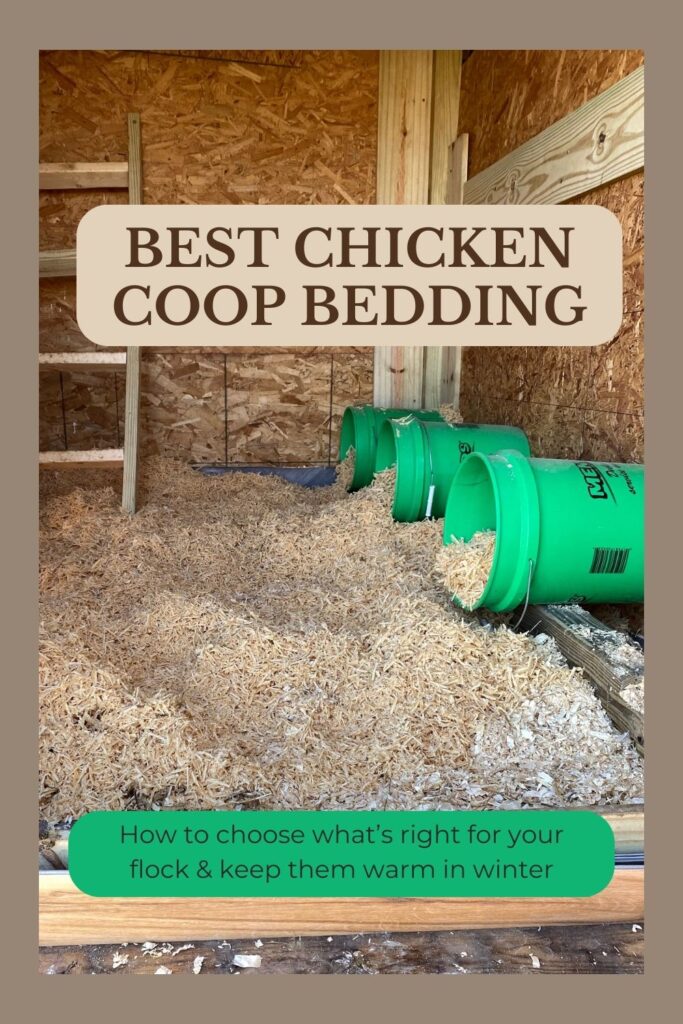
Coffee grounds in the chicken coop?
This one was honestly a stretch for me. When my husband came home from the local farm store excited about this new bedding material that he found, I was willing to listen. As soon as the words “coffee ground litter” came out of his mouth, I thought for sure he was joking!
After doing a bit of research, um, no, this is a real thing and could be a viable option for you and your flock! So don’t laugh quite yet. There are some reasonable arguments as to why it would be beneficial to use coffee grounds in your chicken coop.
Any animal on the homestead is going to bring a certain level of stank. With our chickens, particularly in the winter, they can be stuck inside the coop for weeks at a time. In that amount of time, the coop can really start to reek. Enter coffee grounds. Apparently there is a nice aroma in even a chicken coop when using coffee grounds, which would make the chicken-owning experience even more delightful than it already is!
Coffee grounds can also be a great option if you are looking to reduce the waste of your homestead as much as possible. As Happy Morning Farm puts it, coffee grounds are given a second and third life with being used as a litter and composting material.
Considerations when using coffee grounds as chicken coop bedding
Coffee grounds are considered a green composting material and chicken manure has high levels of nitrogen. What does this mean? If you left your chickens’ poo just sitting in the coop with coffee ground bedding, it would likely mold and stink to high heavens. Much worse than the already barely-tolerable ammonia smell that soaked wood shavings have. This also may not be a great idea for chicken houses in cold climates, as it will not insulate against cold weather.
You cannot use this type of bedding with the deep litter method and therefore this method is a little more higher-maintenance than the others. It can still be used for composting and garden-use, but you will have to add much more “brown” to your compost pile when using this method due to the high “greens” in both the manure itself and the coop bedding. If you have a majority of sunny days where you live and are not put-off by regular cleaning, then coffee grounds may be a great, low-waste chicken bedding option!
What type of chicken coop bedding you use is really not a one-size-fits-all. Though coffee grounds aren’t for us, they could be for you. Humble Hills Homestead has a great post on personal experience using coffee grounds as chicken coop bedding. Read more about the benefits and considerations here.
Different chicken coop cleaning methods
Because this post is focused on chicken coop bedding, I will not go into extreme detail on the different ways you clean and maintain your chicken coop. However, the method you choose will have a bearing on what type of bedding you use, so it is worth briefly explaining here.
We have opted for the deep litter method in our chicken coop. For seven months out of the year, the temperatures range from pretty chilly to frostbite-within-minutes. Therefore we needed a method that didn’t require constant maintenance because there ain’t NO WAY my lazy butt is going out there to shovel out tens of pounds of chicken poo when it’s anything below fifty degrees. Not happening!

The more practical reason is because we eventually want to start a large garden on our homestead and chicken poo can be a great fertilizer once it composts. You cannot place chicken excrement directly onto your garden because it is too hot and will kill your plants. After composting for an appropriate time, however, it is perfectly fine to use. Grubbly Farms has a comprehensive guide to composting with chicken manure if you are interested in reducing your homestead’s waste.
If you do not foresee yourself using chicken manure for gardening but would rather just create a compost pile for it to break down (it has to go somewhere other than the coop, right?), then perhaps one of the other bedding types and methods is best for you. One thing I have learned in our homesteading journey is there really isn’t a “right” thing to do things. It’s all up to you. Sometimes that freedom can be overwhelming, but it truly is a blessing. And remember, if it doesn’t work out the way you thought it would, you can always try something else. Just don’t give up!
Which is the right chicken bedding for me?
The answer to this question depends on a few things. How much time can you dedicate to maintaining your chicken coop? Do you have any other use for the chicken manure? What kind of seasonality do you have in your zone? Sometimes these questions are hard to answer as new chicken owners and they only reveal themselves through trial and error. Be gracious with yourselves as you are learning too!
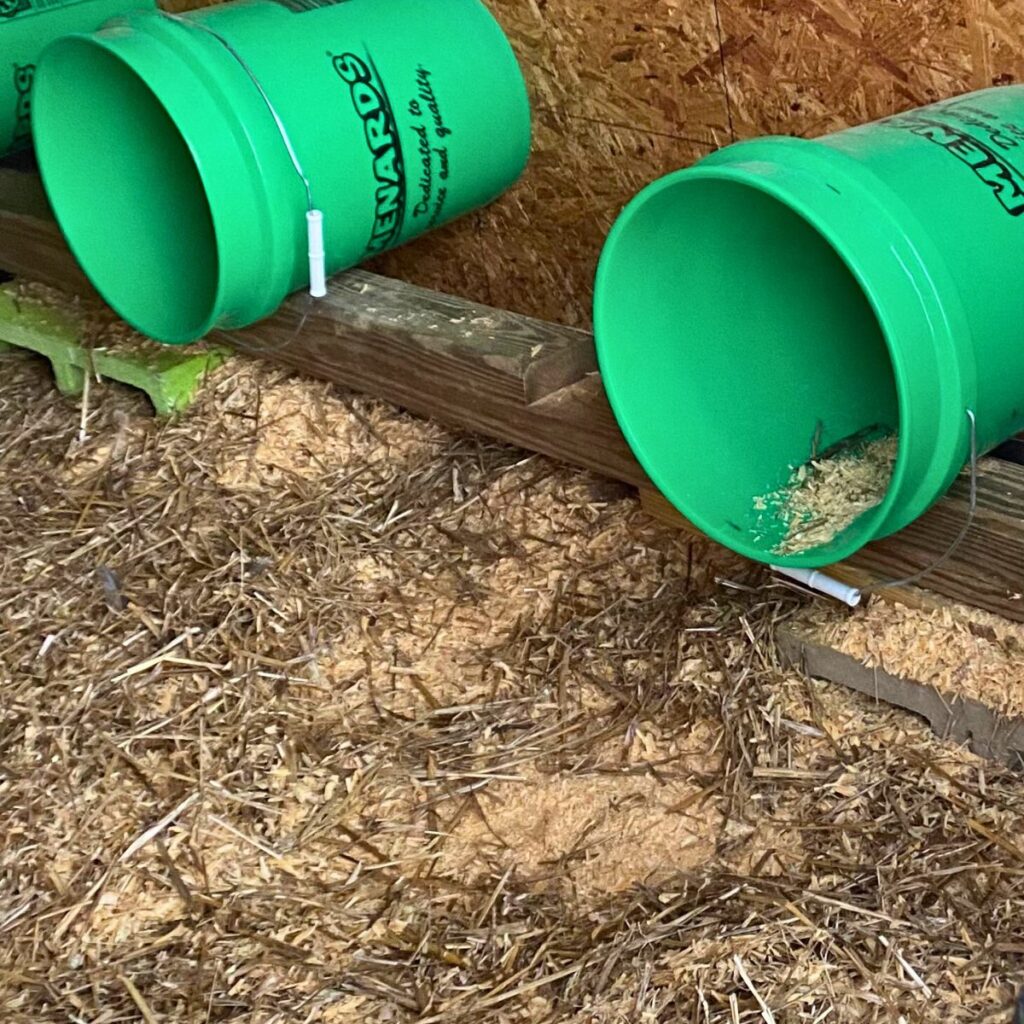
Our first winter with our backyard chickens was a real doozy. We had only built the coop two months prior out of pallets and free wood fencing and there were a lot of places for air and snow to get in. We did our best with piling the coop high with wood shavings and even We are so thankful we did not lose a single chicken that year, though many did get frostbite. We believe a majority of the flock was able to huddle together at the bottom to near the heating panel to maintain body temperature. Essentially, the flock became its own heat source with a little extra help. The only ones who suffered were the goobers who decided pecking order was more important than survival and still sat at the very top of the roosting bars alone.
In preparation for this season, my husband insulated the coop and tried to prevent as much cold air from getting in as possible while still maintaining proper ventilation for fresh air at the top of the coop. We piled pine shavings along the walls of the coop and keep adding throughout winter following the deep litter method. It is a stinky, heavy mess to clean in the spring, but worth saving our time and energy throughout the really cold spells.
I share this to say that maybe not just one type of bedding is right for your flock. We do not use artificial light or heat lamps other than a small heating panel in our chicken coop. We have a variety of breeds of chickens with all of them being cold-hardy. If you do not have hardy chickens, this could be a consideration for the type of bedding you choose. Perhaps in times of extreme weather you will need to combine bedding types or even come up with your own solutions. This can be dependent on the accessibility of electricity, the type of chicken coop you have, the zone you live in, and your preference for maintenance.
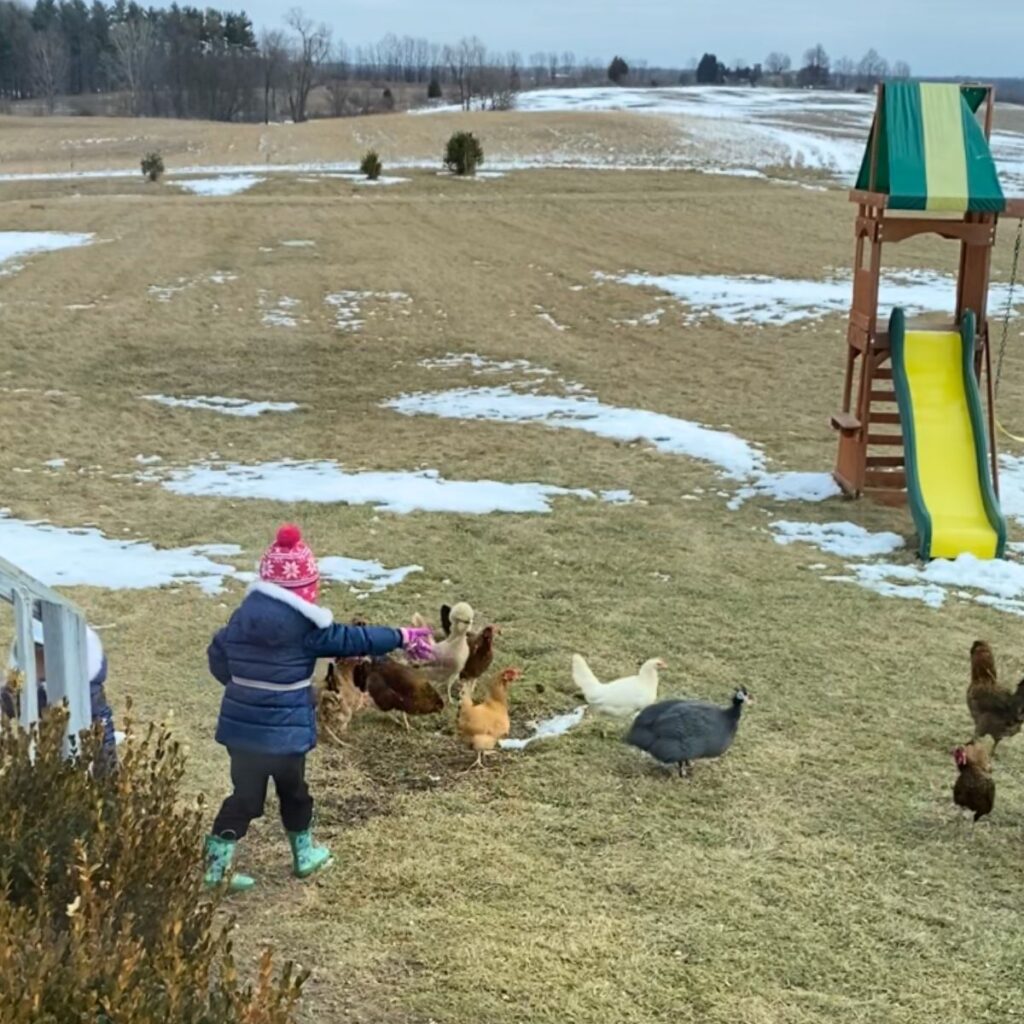
Of course having animals on the homestead increases your responsibility and there isn’t a single living thing that doesn’t require some level of supervision/intervention at times. But chickens are a rather low-maintenance and beneficial way of adding a food source to the homestead, especially for new/first-generation homesteaders. I am thankful my chickens are so hardy and seem to enjoy to be around our family. For more on what our experience has been like having backyard chickens on our homestead, check out my other posts below.
Also, I love to see videos of backyard chickens and free-ranging chickens. Tag me on Instagram @cityfolkhomestead with your best videos of your chickens!
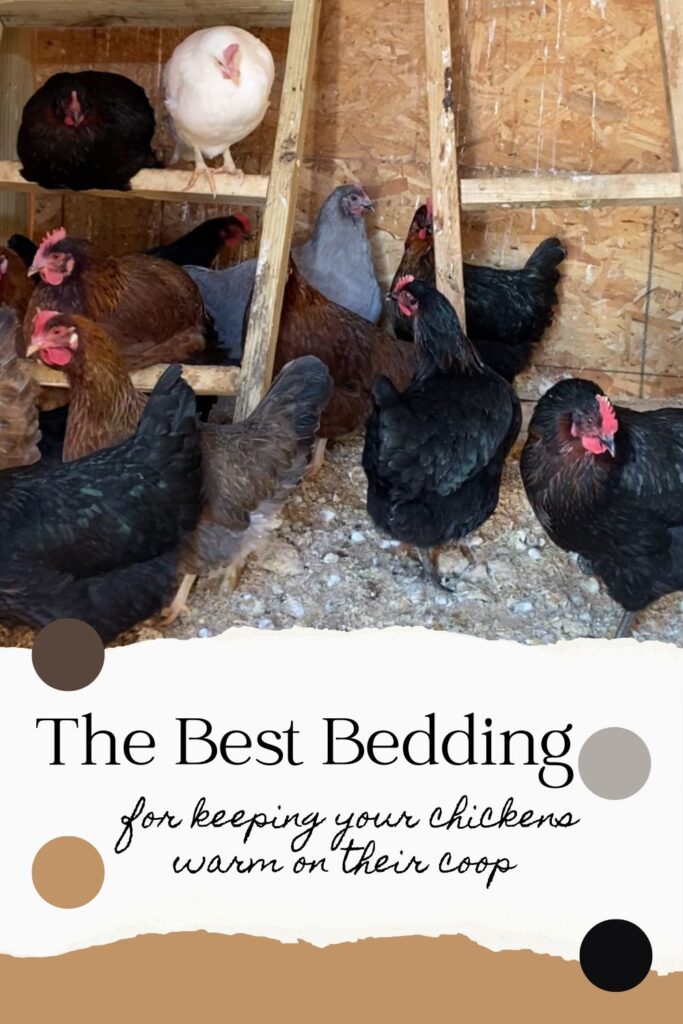


Leave a Reply